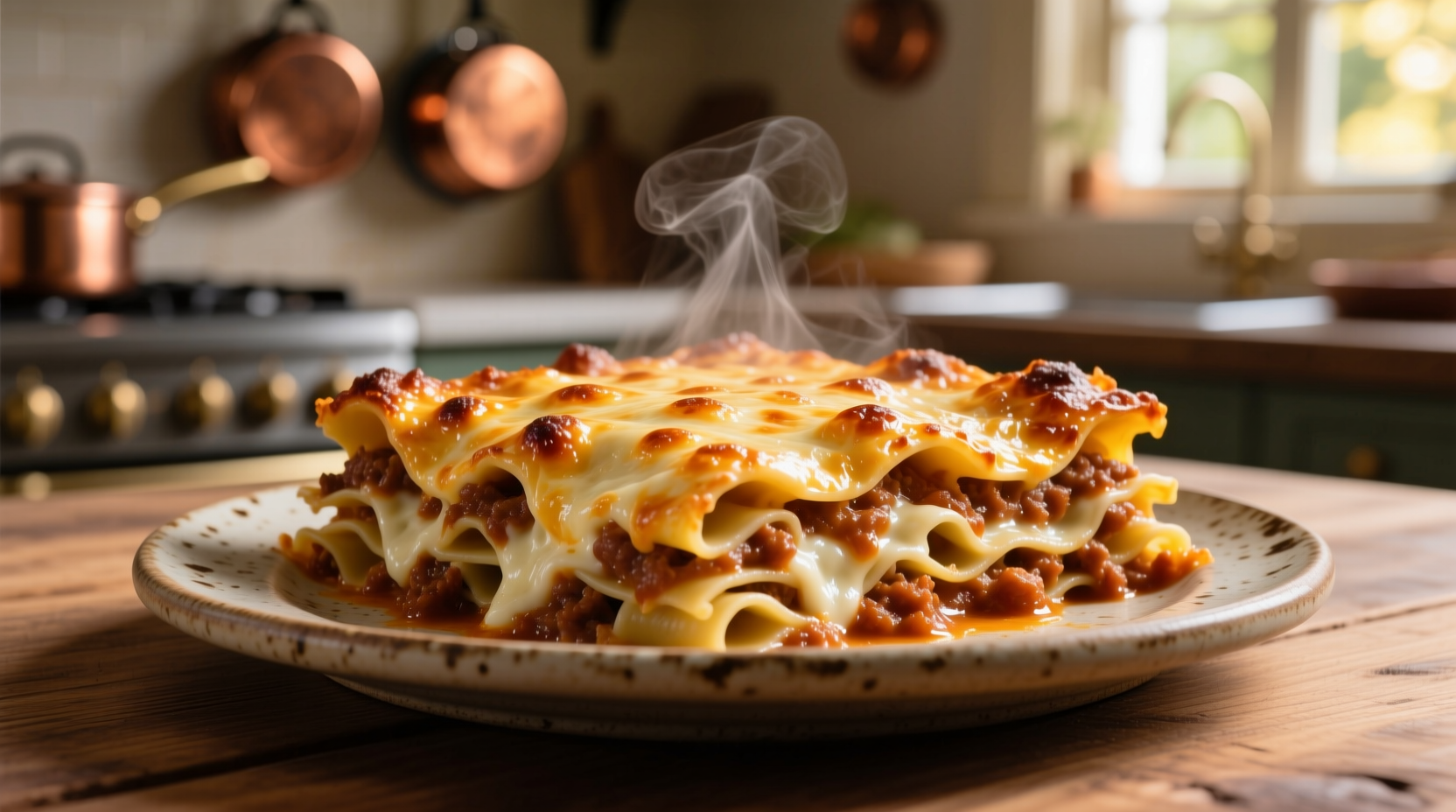Nothing beats a perfectly cooked lasagna with its rich layers of pasta, cheese, and sauce. But getting that ideal texture—neither soggy nor dry—requires understanding the precise timing involved. As a professional chef with years of experience teaching home cooks, I've seen how small timing adjustments transform this classic dish from disappointing to divine.
Breaking Down the Lasagna Cooking Timeline
When you search for "how long does it take for a lasagna to cook," you'll find wildly different answers. That's because cooking time isn't one fixed number—it's a process with multiple phases. Let's examine each stage to help you master lasagna timing.
Preparation and Assembly (15-25 minutes)
Before your lasagna even hits the oven, you'll spend time preparing ingredients and layering. This crucial phase affects your final cooking time:
- Noodle preparation: No-boil noodles save 10-15 minutes but require extra sauce moisture
- Sauce temperature: Cold sauce from the fridge adds 5-8 minutes to baking time
- Cheese preparation: Freshly grated cheese melts faster than pre-shredded
- Dish preparation: Greasing your pan prevents sticking without adding time
Baking Time: The Critical Phase
Here's where most home cooks get confused. The actual oven time depends on several factors:
| Oven Temperature | Covered Baking Time | Uncovered Baking Time | Total Baking Time |
|---|---|---|---|
| 350°F (175°C) | 25-30 minutes | 10-15 minutes | 35-45 minutes |
| 375°F (190°C) | 20-25 minutes | 8-12 minutes | 28-37 minutes |
| 400°F (205°C) | 15-20 minutes | 5-10 minutes | 20-30 minutes |
Professional kitchens typically use the 375°F approach for optimal results. America's Test Kitchen research confirms that starting covered prevents drying while the final uncovered phase creates that perfect golden-brown top.

Resting Time: The Secret Most Home Cooks Skip
Never cut into lasagna immediately after removing it from the oven. The USDA Food Safety and Inspection Service recommends resting time for cooked dishes to allow proper setting. For lasagna:
- Minimum resting: 15 minutes (essential for clean slices)
- Ideal resting: 20-25 minutes (allows flavors to meld)
- Maximum resting: 45 minutes (before it gets too cold)
During this time, residual heat continues cooking the interior while the layers set. Cutting too soon creates a messy, soupy result.
Factors That Change Your Lasagna Cooking Time
Understanding these variables helps you adjust timing for perfect results every time:
Dish Material Matters More Than You Think
Food science research from the University of Illinois Extension shows that different materials affect heat transfer:
- Glass dishes: Require 5-7 minutes longer baking time (slower heat transfer)
- Metal pans: Cook 3-5 minutes faster (better heat conduction)
- Ceramic: Similar to glass but may need slightly less time
Always reduce oven temperature by 25°F when using glass to prevent over-browning.
Ingredient Temperatures Create Significant Variations
A study published in the Journal of Culinary Science & Technology found that cold ingredients can extend cooking time by 15-20%. Consider these temperature effects:
- Cold sauce from refrigerator: +5-8 minutes
- Room temperature cheese: No time adjustment needed
- Frozen meat sauce: +10-15 minutes
- Pre-cooked vs. no-boil noodles: -5 minutes vs. +3 minutes
How to Tell When Your Lasagna Is Perfectly Cooked
Time alone isn't enough—use these professional indicators to determine doneness:
The Temperature Test
The USDA Food Safety and Inspection Service recommends an internal temperature of 165°F (74°C) for cooked casseroles. Insert a food thermometer into the center:
- 150-160°F: Needs 5-7 more minutes
- 165°F: Perfectly cooked
- 170°F+: Slightly overdone (may be dry)
Visual and Texture Indicators
Professional chefs use these visual cues alongside temperature:
- Bubbling edges: Sauce should bubble around the pan's perimeter
- Golden top: Cheese should be evenly golden, not pale or burnt
- Steam test: Insert a knife, then pull out—steam should rise consistently
- Noodle test: Center noodles should be tender but hold shape
Troubleshooting Common Lasagna Timing Problems
Even experienced cooks face these timing challenges. Here's how to fix them:
Soggy Lasagna Solution
If your lasagna comes out watery:
- Extend uncovered baking time by 5-8 minutes
- Sprinkle extra cheese on top to absorb moisture
- Let it rest longer (up to 30 minutes) before serving
Prevention tip: Thicken your sauce by simmering it 10 minutes before assembly.
Dry or Crumbly Lasagna Fix
For lasagna that's too dry:
- Cover with foil during the last 10 minutes next time
- Increase sauce-to-noodle ratio by 25%
- Add ¼ cup extra liquid (broth or water) to your sauce
Pro Tips for Perfect Lasagna Timing Every Time
After teaching thousands of home cooks, here are my most effective timing techniques:
- Oven rack position: Middle rack provides most even heating
- Aluminum foil technique: Tent foil to prevent sticking to cheese
- Preheating matters: Always preheat oven fully before baking
- Resting is non-negotiable: Set timer for 15+ minutes before cutting
- Batch cooking: For multiple pans, rotate positions halfway through
Remember that lasagna continues cooking from residual heat during resting. Remove it from the oven when it's almost perfect, not completely done.











 浙公网安备
33010002000092号
浙公网安备
33010002000092号 浙B2-20120091-4
浙B2-20120091-4